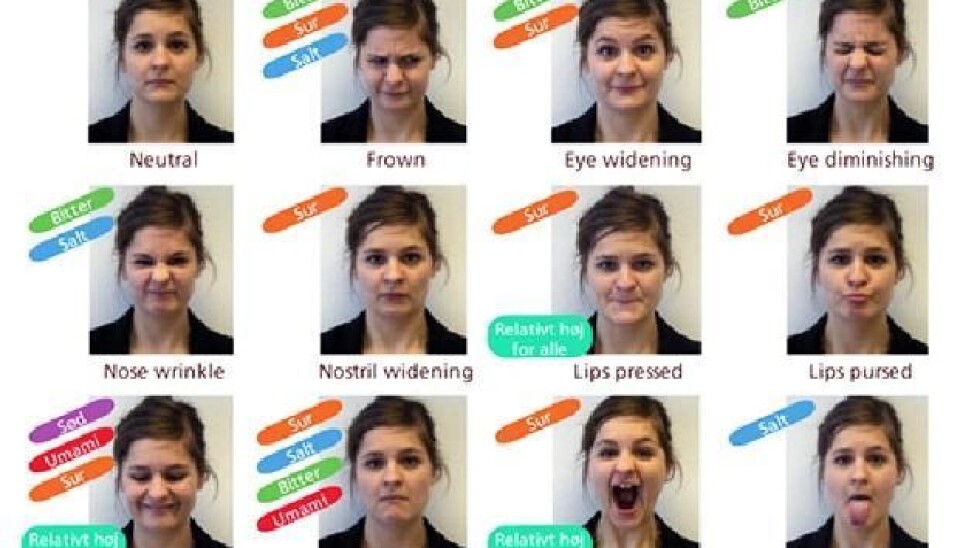
Your face reveals what you are eating
New research links facial expressions to the taste of what we eat. In the future it will be difficult to conceal what we actually think food tastes like.
You know what it’s like. You bite into a lemon and cannot help pursing your lips. It is only natural after all - and if you don't believe it, perhaps some new research will convince you.
Researchers at the Faculty of Biosciences at the University of Copenhagen, LIFE, and the Swedish Institute for Food and Biotechnology have mapped out how our faces react to a whole series of different flavours. The results have been published in the journal Food Quality and Preferences.
"The objective was to see whether we could decipher taste from the wrinkles in people's faces. We had a notion that people reacted with their faces according to what they had in their mouths," explains Bodil Helene Allesen-Holm, the head of the Sensory Laboratory of the University of Copenhagen's Department of Food Science.
Five different kinds of taste
In order to find out how people react to different tastes, the researchers gave a trained panel of tasters different strengths of the flavours sour, sweet, bitter, salt and umami, a category which includes meat and mushrooms.
The researchers recorded the panel's reactions on video and used sophisticated face recognition software to analyse the footage.
They were subsequently able to divide people's reactions into 12 different facial expressions. For example, they reacted to the bitter tastes by frowning, turning up their noses, opening their eyes wide or screwing up their eyes. They reacted to sour tastes by frowning, pursing their lips, pointing their lips or turning the corner of their mouths downwards.
"We made use of some basic facial expressions which are part of the FACS (Facial Action Coding System), used to decipher facial expressions in children as well as adults in our work in the sensory field," says Allesen-Holm.
Umami and sweet were both characterised as pleasant and did not give rise to powerful facial reactions. In the case of the sweet taste, the experiment participants frowned slightly less and did not screw their eyes up quite so tightly as they did with the more unpleasant tastes.
We react more strongly to things we don't like
Apart from finding out how we react to different tastes, the researchers also discovered that our facial reactions are stronger if we do not like what we are tasting.
The experiment was carried out on a tasting panel of 21 trained tasters. Each participant was exposed to different combinations of the five different tastes in three different intensities. They were also given water.
"The next step will be to find out how we react emotionally to the taste we have in our mouths. That is the direction in which our research is continuing," says Allesen-Holm.
Read the article in Danish at videnskab.dk








